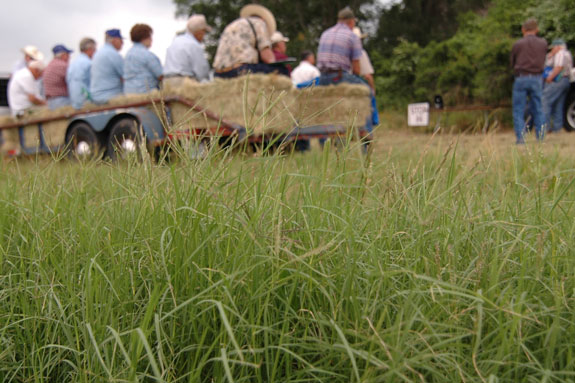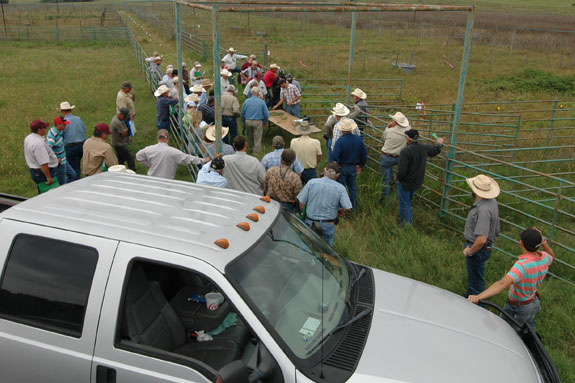The Brazos Area Hay Producers and the Texas A&M AgriLife Extension Servicein Brazos, Burleson, Grimes, Limestone, Leon, Madison, Milam, Robertson and Washington counties conducted the field day. Circle X Land and Cattle Co. hosted the event at the ranch.
Dr. Jason Johnson, AgriLife Extension economist, said cattle prices should remain strong due to the fact so much corn has been planted in the U.S.

He said 97 million acres have been planted, which is a record, and if ample rainfall is received, another record should be set for harvested acres.
Regarding prices, it all hinges on weather, he said.
“We could go to the high $4 range, but if there’s no rain, we could go to the eights,” he said. “It’s a flip of the coin from $4.75 to $8. It’s based solely on growing conditions.”
Johnson said hedge funds have not been taking many equity-long positions in commodities such as corn, but that will soon change as the growing season nears harvest.
Corn carryover stocks can go from 6 percent to 13 percent based on projections of last year’s crop, he said. With beef cattle, it’s a different story.
“It’s a much longer growing cycle (with cattle),” Johnson explained. “We’ve got the fewest cows since the 1950s, which means we will have fewer calves. Feedlots are hotels, and they make their money on occupancy.”
Low occupancy is making it tough going for feedlots trying to cover costs and make a profit.
Johnson also discussed drought-management strategies. One suggestion was to not stock at full capacity but instead to diversify a cattle operation.
For example, Johnson said to allow room for the foundation herd, some replacement cows and some yearlings “that can be sold off at anytime.”
“Be flexible,” he said. “The U.S. Drought Monitor still doesn’t show we are out of this. One of the things we can control are costs and match our forage with the right amount of cows.”

Johnson said it costs $600 a year to carry a cow from one year to the next. He said a body condition score of five is necessary to achieve a 90 percent calving rate.
“You’ve got to be selective about your expenses, but you can’t short cows on nutrition when it comes to calving.”
One way to cut expenses depends upon a rancher having hay storage. Johnson said a rancher could purchase hay during a year when there is oversupply and prices are at a reasonable rate.
The hay that is not used is protected by being inside a barn and will be good for the following year.
“Indoor storage helps carry hay from one year to the next,” he said. “Overall, there are no silver bullets. Good managers prevent problems.” ![]()
—From AgriLife Today article by Blair Fannin
PHOTO
TOP: Managing weeds in Bermuda grass pastures was one of the topics discussed at the 27th O.D. Butler Field Day at Camp Cooley Ranch. Photo courtesy of Texas A&M AgriLife Extension Service photo by Blair Fannin.
BOTTOM: More than 100 beef producers from the Brazos Valley took part in the 27th O.D. Butler Field Day at Camp Cooley Ranch, which was conducted by the Texas A&M AgriLife Extension Service and Brazos Area Hay Producers. Photo courtesy of Texas A&M AgriLife Extension Service photo by Blair Fannin.






